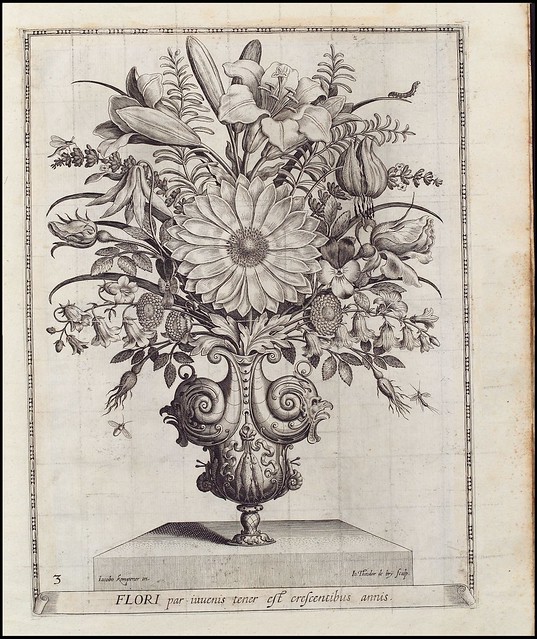
Flori par invenis tener est crescentibus annis
A flower is like youth in the bloom of life
A flower is like youth in the bloom of life

A flore accipias honeste vivere discas
The flower teaches us to live honourably
The flower teaches us to live honourably
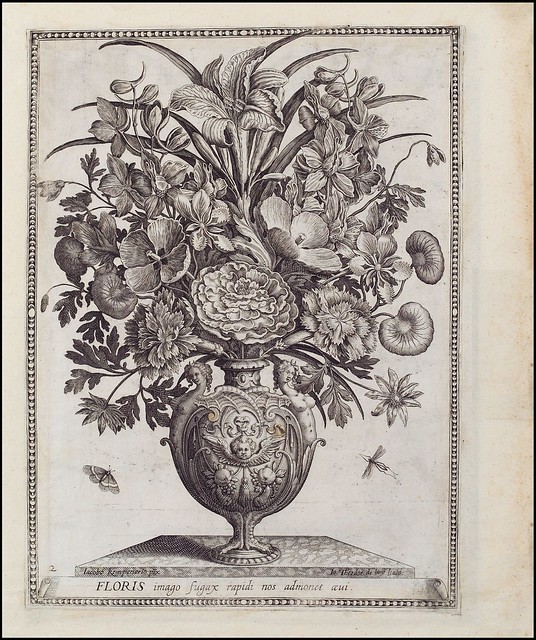
Floris imago fugax rapidi nos admonit aevi
The fleeting presence of a flower warns us of a rapid lifetime
The fleeting presence of a flower warns us of a rapid lifetime
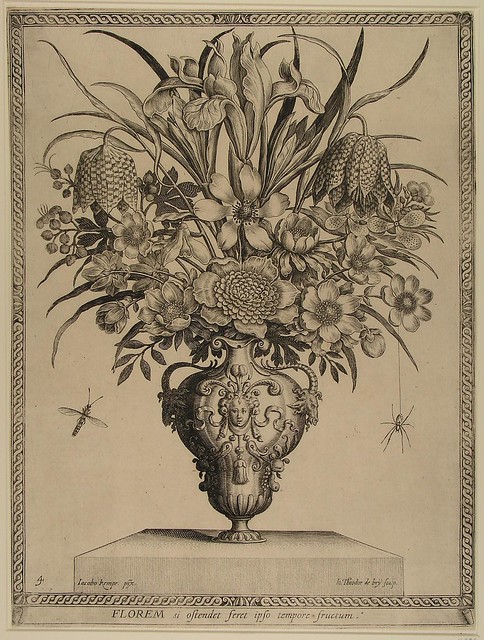
Florem si ostendet feret ipso tempore fructum
Like the flower, we will bear fruit in our own good time
Like the flower, we will bear fruit in our own good time
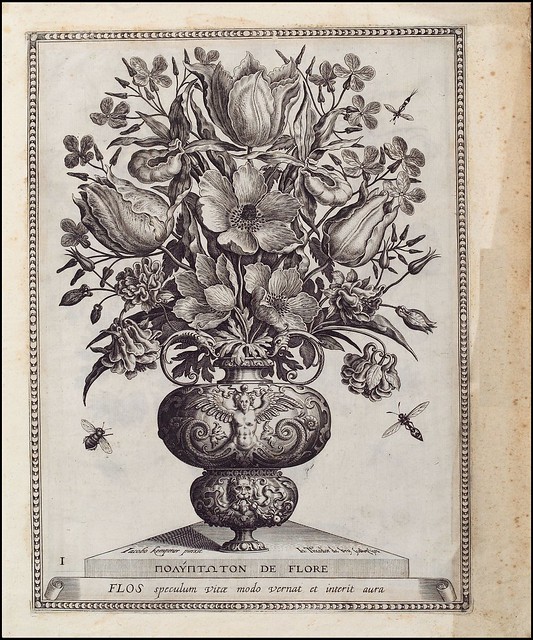
Flos speculum vitae modo vernat et interat aura
The flower mirrors life; it blooms and perishes in the air
The flower mirrors life; it blooms and perishes in the air
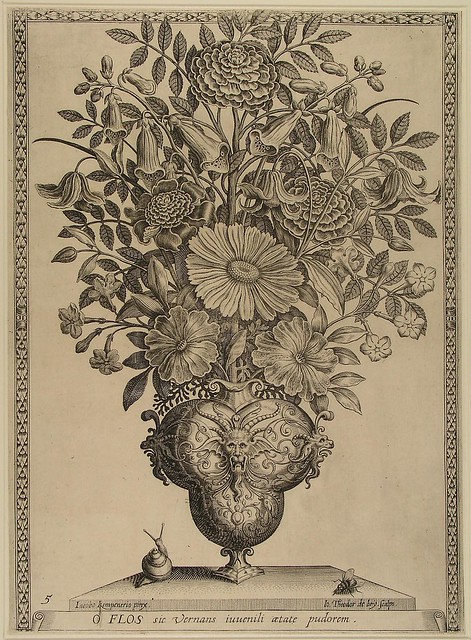
O flos sic vernans iuvenili aetate pudorem
Oh how you flourish shyly flower, the modesty of youth
Oh how you flourish shyly flower, the modesty of youth

{detail from a different version of the plate immediately above}
This rare and very elegant suite of six flower prints was produced by the Flemish engraver, Johann Theodor de Bry, in the late 1590s. The series was based on paintings by a little known countryman of de Bry's, Jacob Kempener. But it was the engravings that proved to be the superior works of art, featuring grotesques, garlands and ornament on the vases and nearby insects to enhance the feeling of capturing still life, in concert with the blooming flowers.
The series was called 'Polyptoton de Flores' (The variance of the flowers) and the mottoes* themselves - devised by de Bry and featuring word plays in Latin hexameter - follow the theme of transience. Life is short, as with a flower's bloom.
De Bry certainly produced at least two versions of the suite: one of the images above features a Greek word or phrase in the motto. Obviously we are seeing two different copies above, but apart from the Greek one, both versions featured were printed from the same plates.
Those bordered in black were spliced together from screencaps and were sourced from the Virtuelles Kupferstichkabinett out of the Herzog August Bibliothek at Wolfenbüttel. They're easy to find searching on one of the artist names : I like these best because you can zoom to great magnification in a very large frame.
The other images above come from the Memory of the Netherlands collections. [I'm having trouble reaching the site at the moment, but again, it's pretty easy to find the images with the artist names]
De Bry's flower series was influential as a prototype among the artistic community as well; at least ten different artists had produced variants on the originals - some included extra accoutrements like birds on the tables - by 1625. A couple of examples of these are shown below (sourced from the British Museum Prints Database). The first pair by Sadeler is, I think most people will agree, of much higher quality than the version underneath by Tozzi. These were near-exact copies of de Bry, although in the reversed state. The de Bry originals remain the most exquisitely executed of all, for mine.
For A.N.

Engravings by Jan Sadeler, publisher, printer, printmaker of the
Stadeler dynasty in Antwerp, Cologne, Venice, Mainz & Frankfurt (d. ?1600)
Stadeler dynasty in Antwerp, Cologne, Venice, Mainz & Frankfurt (d. ?1600)

Engravings by Pietro Paolo Tozzi, engraver and publisher in Padua (d. 1627)
*Thanks to KP for the translation (without context) and apologies if my subsequent tinkering extracted all poetic / romantic goodness from the lines.
Tidak ada komentar:
Posting Komentar